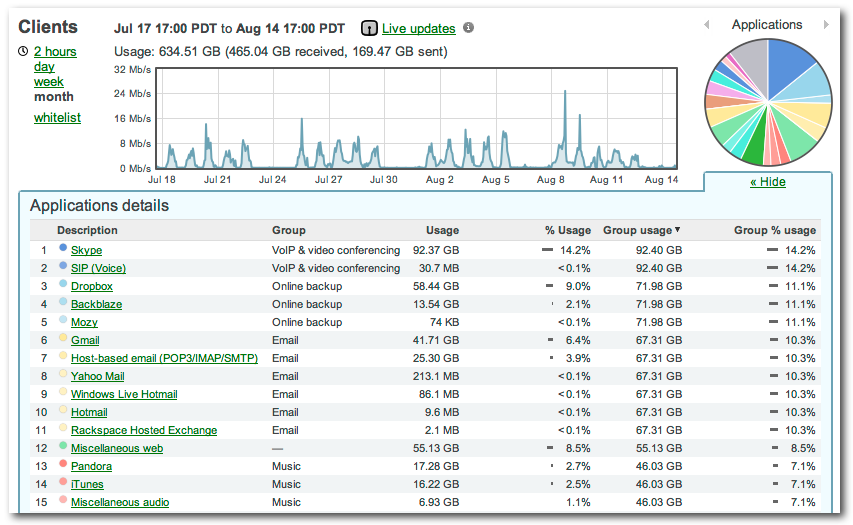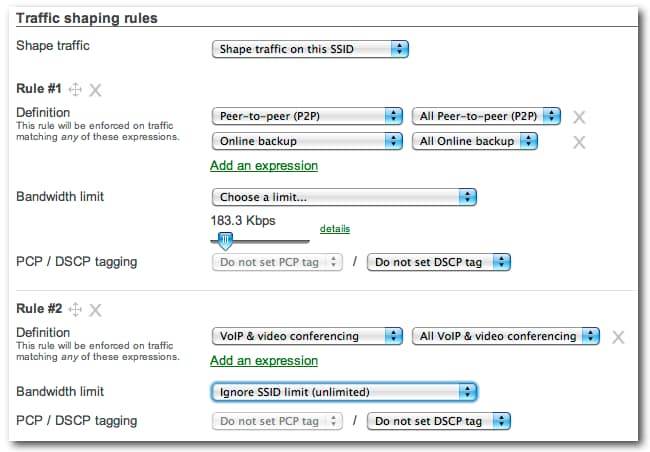Does your wireless connection ever feel slow and sluggish? Below are five popular applications that can consume quite a bit of bandwidth. Don’t let them bog down your network!
- Skype and VoIP / video conferencing
- Dropbox and online backup
- Facebook
- YouTube
- Pandora
Using Meraki’s built-in application visibility makes it easy to see which apps consume the most bandwidth. A look over the past month at the application categories running on Meraki’s network reveals the top three – VoIP and video conferencing, online backup, and email – and the applications that consume the most bandwidth of each of those categories. Figure 1 shows the summary.

Figure 1: Application traffic by category
Checking the 5 apps listed above reveals how much bandwidth each uses on the wireless network:
- Skype and VoIP / video conferencing – 14%
- Dropbox and online backup – 11%
- Facebook – 0.8% (all social web adds up to 1.1%)
- YouTube – 3.0% (all online video adds up to 8.9%)
- Pandora 2.5% (music apps add up to 6.7%)
A deeper dive into the online backup category shows that Dropbox is the most popular online backup application, and within that, the dashboard shows the top client devices that contribute to Dropbox usage. This was eye opening – my laptop is #2 on the list in figure 2, consuming just over 32% of all the wireless network’s Dropbox usage.

Figure 2: Application details - Dropbox
Another application consuming large amounts of bandwidth is Windows file sharing. Like many organizations, Meraki uses some file servers that store and allow sharing of files. Note here that the client consuming the most Windows file sharing bandwidth uses 38% of all the Windows file sharing activity.
What should be done if these categories are out of line with expectations or business needs? The answer is simple – use application traffic shaping to throttle undesired applications by enforcing traffic policies at the network edge (at the AP). For example, figure 4 below shows how one rule can govern peer-to-peer and online backup applications, and another rule lets VoIP and video conferencing flow freely across the wireless network.

Figure 3: Traffic shaping rules
Have you looked at your wireless network recently to see what applications are using the most bandwidth? We’d love it if you share with us a little about the most popular applications on your network.




No comments:
Post a Comment